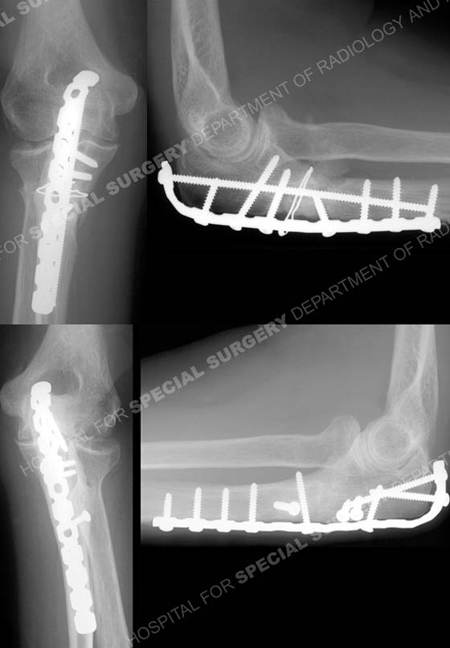
In 1967, Bado discovered “true Monteggia lesions” and classified them into 4 groups based on the direction of the radial head dislocation and the angulation of the ulna fracture. Unfortunately, this type of fracture-dislocation is frequently associated with complications, poor functional results, and further operations. The Monteggia fracture can be considered a rare injury with less than 1% incidence of all fractures and 2% to 5% of all proximal forearm fractures. Careful evaluation of fracture pattern, identification of injury mechanism, and appropriate treatment planning based on Monteggia fracture treatment principles are mandatory to achieve the patient's best outcome.Ī Monteggia fracture was described initially by Giovanni Battista Monteggia in 1814, with the original description is a traumatic lesion distinguished by a fracture of the proximal third ulna and anterior dislocation of the proximal epiphysis radius. Monteggia-like-lesion has many variations in physical and radiograph appearance. The patient regained 0 to 125 o of elbow flexion and 0 to 165 o of supination and pronation. She did not complain of any pain and decreased strength. Outcomes:Īfter 3 months, the patient showed improvement with the Mayo Elbow Performance Score (MEPS) of 85. The ulna was reduced and stabilized first using a 3.5 mm one-third tubular plate (ORMED), and internal fixation of the radial epiphysis was done using a 1.6 mm miniplate (Prohealth). Open reduction and internal fixation were performed 5 days later. The patient underwent surgical debridement, and the forearm was immobilized using a backslap in a supine position and elbow flexion 90 o. This fracture was similar to the Monteggia type III fracture except for proximal radial disruption that occurred laterally through a Salter-Harris type II fracture. Radiograph examination showed a displaced fracture of the left proximal third ulna accompanied by displacement of the left proximal radius. She was reluctant to move her arm due to pain. Her main complaint was the pain and swollen of her left elbow. Patient concerns:Ī 16-year-old girl was admitted to our emergency department after a single motorcycle accident. This type of fracture is rare and frequently associated with complications, poor functional results, and further operations. He also used the term “equivalents” or “Monteggia-like-lesions” to describe specific injuries with similar radiographic patterns. In 1967, Bado discovered “true Monteggia lesions” and classified them into 4 groups. Ī Monteggia fracture was described initially as a fracture of the proximal third ulna and anterior dislocation of the proximal epiphysis radius.
#MONTEGGIA FRACTURE LICENSE#
This is an open access article distributed under the Creative Commons Attribution License 4.0 (CCBY), which permits unrestricted use, distribution, and reproduction in any medium, provided the original work is properly cited.

The data that support the findings of this study are available from the corresponding author upon reasonable request. The authors have no funding and conflicts of interests to disclose. This study has been reviewed by the authors’ Institutional Review Board, and the patient had given written consent. Treatment of Monteggia-like-lesion in a young patient: A case report.
#MONTEGGIA FRACTURE HOW TO#
How to cite this article: Santoso AR, Huwae TE, Wijaya AE, Pribadi A, Cendikiawan F, Abduh M. Jaksa Agung Suprapto 2, Malang 65112, East Java, Indonesia (e-mail: ).Ībbreviation: MEPS = Mayo Elbow Performance Score. Santoso, Orthopaedic and Traumatology Department, Saiful Anwar General Hospital, Jl. Orthopaedic and Traumatology Department, Faculty of Medicine Universitas Brawijaya, Saiful Anwar General Hospital, Malang, Indonesia.


 0 kommentar(er)
0 kommentar(er)
